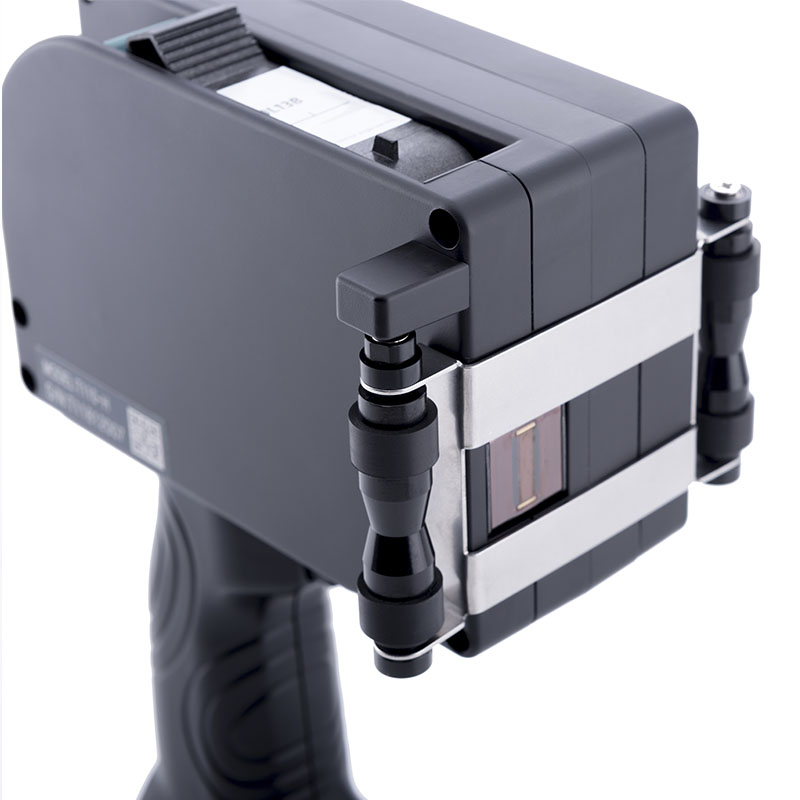Handheld inkjet printers have emerged as versatile tools that offer portable and convenient printing solutions across multiple industries. These compact devices, equipped with advanced printing technology, are capable of printing on a variety of surfaces with ease and precision. In this article, we will explore the diverse applications of handheld inkjet printers in different industries, highlighting their benefits and contributions to efficient and flexible printing.
Manufacturing and Packaging
In the manufacturing and packaging industry, handheld inkjet printers are used for printing labels, barcodes, and product information directly onto various materials, including cardboard boxes, plastic containers, and metal surfaces. These printers enable quick and on-demand printing, allowing manufacturers to streamline their processes, improve traceability, and meet compliance requirements.
Logistics and Warehousing
Handheld inkjet printers play a crucial role in logistics and warehousing operations. They are used for marking packages, pallets, and shipping containers with tracking information, dates, and serial numbers. By providing mobile printing capabilities, these printers enhance efficiency, accuracy, and organization in the supply chain, making it easier to identify and track products throughout the distribution process.

Construction and Building Materials
In the construction industry, handheld inkjet printers are utilized for printing on construction materials, such as wood, concrete, pipes, and tiles. They enable the direct labeling of components, providing essential information, instructions, or branding on-site. These printers offer flexibility and adaptability, allowing construction professionals to mark items quickly and efficiently, improving project management and reducing errors.
Food and Beverage
Handheld inkjet machine find applications in the food and beverage industry, where they are used for printing expiration dates, batch numbers, and nutritional information on packaging materials. These printers offer the advantage of printing on various surfaces, including plastic, glass, and foil, ensuring compliance with labeling regulations while maintaining product integrity and safety.
Retail and E-Commerce
In the retail and e-commerce sectors, handheld inkjet printers are utilized for printing product labels, price tags, and barcodes. With their portable nature, these printers enable efficient and accurate labeling of products in warehouses, distribution centers, and retail stores. They facilitate inventory management, improve product identification, and enable quick price adjustments, enhancing the overall customer experience.
Events and Exhibitions
Handheld inkjet printers are valuable tools for event organizers and exhibitors. They allow on-site printing of visitor badges, event schedules, and promotional materials. With their wireless connectivity options, these printers provide flexibility and convenience, enabling real-time printing and customization of event-related documents.
Healthcare and Laboratory
Handheld inkjet printers find applications in healthcare and laboratory environments. They are used for printing patient wristbands, laboratory specimen labels, and medical equipment tags. These printers offer the advantage of fast and accurate printing, ensuring proper identification, tracking, and compliance with strict labeling requirements.
Automotive and Manufacturing Components
In the automotive industry, handheld inkjet printers are used for marking and coding automotive components, such as parts, engines, and tires. These printers enable the direct printing of essential information, including serial numbers, production dates, and part numbers. This improves traceability, quality control, and counterfeit prevention throughout the automotive supply chain.
Art and Craft
Handheld printers are also employed in art and craft applications. Artists and hobbyists use them for printing customized designs, patterns, and texts on various surfaces, including canvas, fabrics, and ceramics. These printers offer creative freedom and allow for personalization in artistic projects.
Security and Identification
Handheld inkjet printers play a role in security and identification applications, such as printing visitor badges, employee IDs, or event access passes. Their mobility and quick printing capabilities enable efficient on-demand identification solutions in various settings, including offices, schools, and conferences.
In conclusion, handheld inkjet printers have found diverse applications in numerous industries, revolutionizing printing processes with their portable, efficient, and versatile features. Whether for manufacturing, logistics, construction, retail, healthcare, or creative endeavors, these printers offer flexibility, convenience, and reliable printing solutions. As technology continues to advance, handheld inkjet printers are likely to expand their capabilities and find new applications in the ever-evolving landscape of modern industries.
评论
发表评论